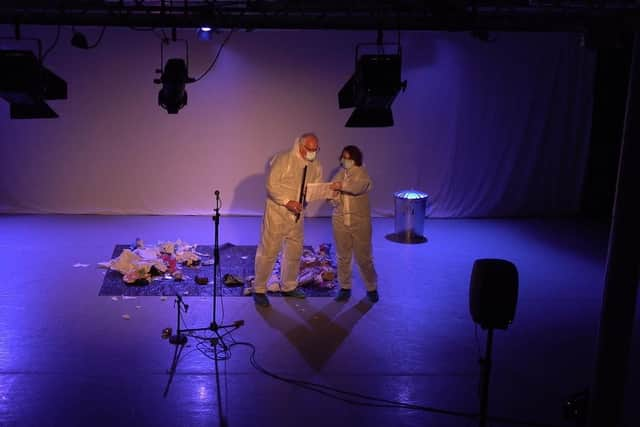Music review: Sound festival, various venues, Aberdeen


You’ve got to hand it to Aberdeen’s sound festival. With two live events this year plus generous online offerings in 2020, there’s clearly a deep passion for sharing contemporary music. And as sound returned to its autumn home, its opening days showed it blending the lessons of lockdown and some serious grappling with climate issues, just a couple of weeks before COP26 kicks off in Glasgow.
Nowhere more so than on sound’s opening night, courtesy of the brilliantly imaginative, deeply compelling Distance (*****) composed by Laura Bowler, and featuring soprano Juliet Fraser in Aberdeen and the Talea Ensemble streamed in live via Zoom from New York, neatly covering both the pandemic and the climate emergency (indeed, sound 2021 was an entirely flight-free festival). That the piece worked at all was a breathtaking technical achievement, but it was Distance’s artistic ambitions that really wowed. Merging multiple video feeds, live and recorded sound, and an exquisitely strange sound world conjured through Bowler’s intricate music, it pranced nimbly between experiences of flight, and reflections on the data flow that was making the piece possible at all, with some self-deprecating humour thrown in lest that sound too po-faced. Distance felt like the unveiling of something truly important and inspirational.
Advertisement
Hide AdAdvertisement
Hide AdThe following evening, festival chair Pete Stollery was joined by co-conspirator Bea Dawkins and Alistair MacDonald on electronics for more, more, more (****) by composer and sound artist Matthew Herbert. Decked in hazmat suits and facemasks, Stollery and Dawkins sorted through a pile of rubbish, extracting items to explore their sonic potential, sounds that were captured and sent whirling round the venue. From delicate purrings and clickings, the unstoppable accumulation eventually became, inevitably, little more than white noise. Herbert’s commentary on consumerism and waste was clear, but it was carried off with laudable wit and aplomb – another example of sound’s inventive ways with weighty themes.
A message from the Editor:
Thank you for reading this article. We're more reliant on your support than ever as the shift in consumer habits brought about by coronavirus impacts our advertisers.
If you haven't already, please consider supporting our trusted, fact-checked journalism by taking out a digital subscription at https://www.scotsman.com/subscriptions